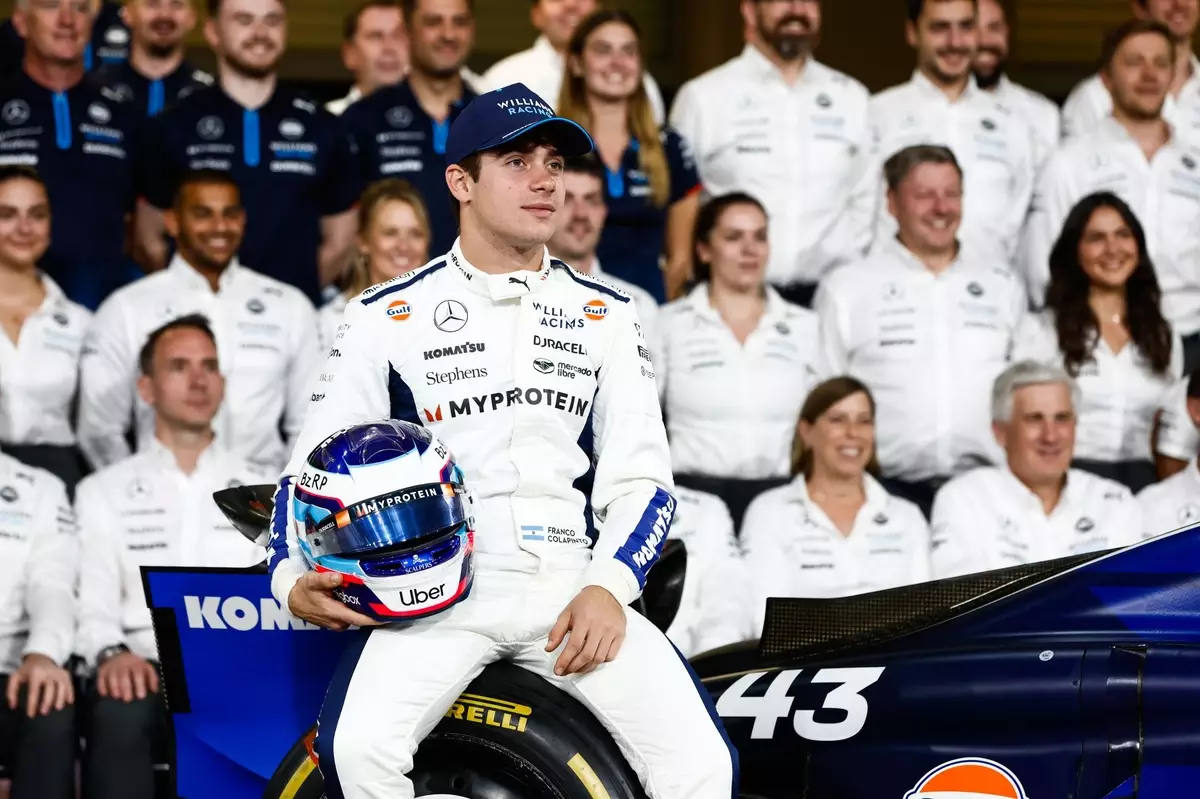In the high-stakes world of Formula 1, a driver’s performance is often scrutinized under the harshest of lights. For Franco Colapinto, stepping into the Williams team as a replacement for Logan Sargeant was both an opportunity and a challenge. His tenure in the sport has been marked by impressive early results that grabbed the attention of pundits and rival teams alike, yet recent difficulties have cast shadows over his overall impact. As fellow driver Alex Albon pointed out, it’s critical to evaluate Colapinto’s rookie season with a more nuanced lens, considering both his potential and the turmoil that enveloped the Williams team.
Colapinto’s initial outings with Williams at the Dutch Grand Prix and subsequent races revealed a driver capable of not just keeping pace but excelling under pressure. In his first three race weekends, he secured five crucial points for the team, giving Williams a much-needed boost during an otherwise bleak period. This performance showcased Colapinto’s adaptability and composure—traits essential for success in such a demanding sport. However, his promising start is often overshadowed by the crashes that characterized the latter part of his season in Brazil and Las Vegas, leading some analysts to question his capacity to handle the pressures of F1 racing.
It is essential to recognize that the transition into Formula 1 is notoriously challenging, even for the most seasoned drivers. Colapinto, at just 21 years old, navigated this labyrinth of expectations while confronting a car that became increasingly difficult to manage as the season drew to a close. Albon, with insight born from his own experiences, commented on how the performance of the Williams FW46 had declined, making it more challenging for both drivers to extract their peak performances.
One of the critical factors influencing Colapinto’s performance was the evolution of the Williams car itself. After an initial spike in competitiveness due to a significant technical upgrade, the team’s momentum faltered as rivals advanced. “In terms of timing,” Albon later remarked, “I think it was perfect he came in when the car was at its most competitive,” referring to the favorable circumstances under which Colapinto first entered the grid. This peak provided a window of opportunity that was unfortunately short-lived, as the complexities of the vehicle increased significantly as the races unfolded.
With Formula 1 being an unforgiving arena, the margins of error become razor-thin when performance deteriorates. Albon articulated this essence perfectly when he stated that entering Q2, once achievable with an average lap, evolved to necessitating flawless runs—each race became a grueling test of endurance and skill. In Colapinto’s case, it became apparent that the heightening demands of the car coincided with him navigating entirely new tracks, thus forging a confluence of challenges that went well beyond individual performance.
For young athletes like Colapinto, setbacks are an inevitable part of growth. His experiences through the last races of the season—especially his debut in wet conditions and the chaotic Las Vegas track—will serve as critical learning moments as he continues to hone his skills. Albon emphasized the need for patience and understanding in evaluating Colapinto’s trials, noting the collective difficulties the team faced and the particularly tough wet conditions in Brazil which he had to contend with during his first appearance in rain-soaked racing.
In the context of the larger narrative surrounding his career, these hurdles serve to underline rather than diminish Colapinto’s potential. Albon’s defense of his teammate is a crucial reminder: mistakes happen, but they do not solely define a driver.
After a tumultuous season, the future of Franco Colapinto remains an intriguing topic within the F1 community. While the recent mishaps may have influenced perceptions, it is essential to appreciate the broader picture laid out by Albon and others. As teams reassess their driver lineups for future seasons, the value of experience cannot be overstated.
Overall, Colapinto’s journey is a testimony to the challenging nature of Formula 1, a world where both triumphs and tribulations shape a driver’s narrative. As he seeks to build upon his debut season—learning, adapting, and refining his craft—the insights gained from both his successes and struggles will undoubtedly influence his approach in the future races to come, ensuring that he continues to evolve as a formidable contender on the grid.


Leave a Reply